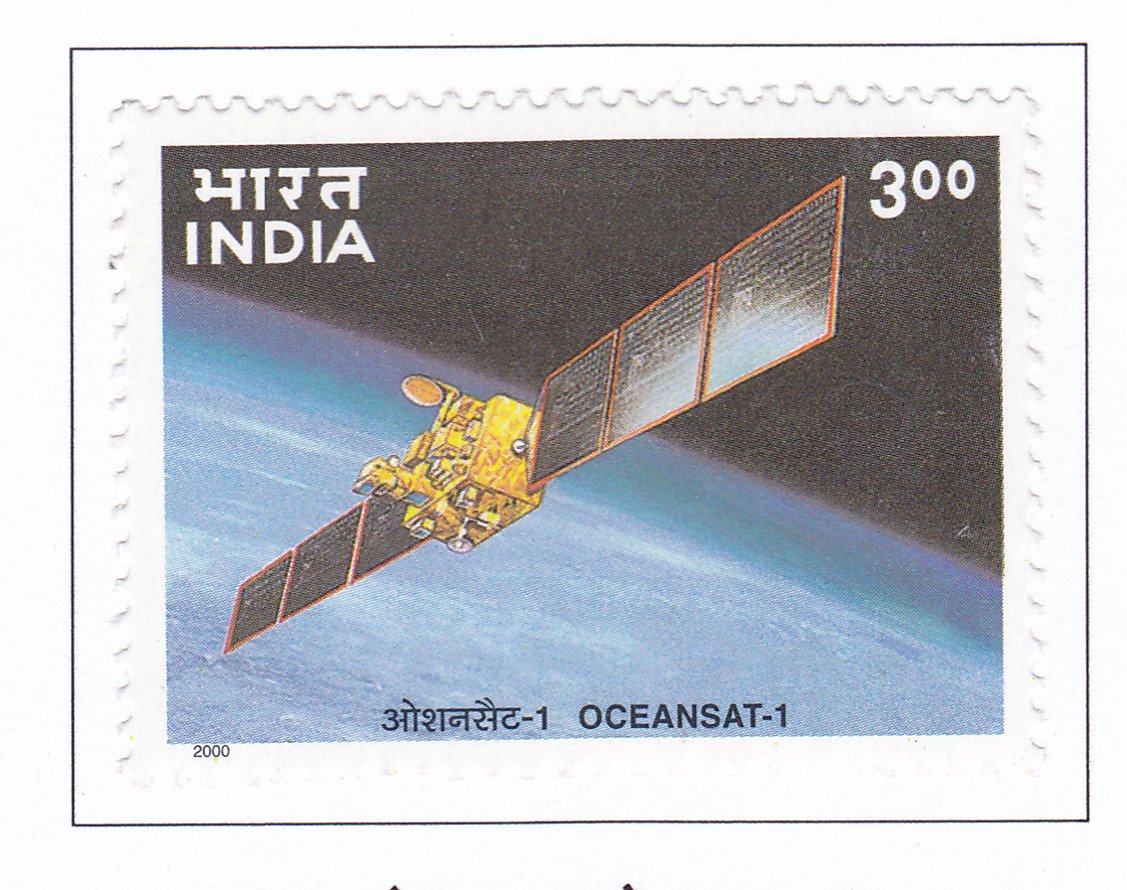India’s Space – Oceansat-I

Technical Data
| Stamp Set | India's Space Programme |
|---|---|
| Date of Issue | September 29, 2000 |
| Denomination | Rs. 3 |
| Quantity | 3,000,000 |
| Perforation | comb 13½ x 13 |
| Printer | Calcutta Security Printers Ltd |
| Watermark | No Watermark |
| Colors | Multicolor |
| Catalog Codes |
Michel IN 1782 Stamp Number IN 1847 Yvert et Tellier IN 1548 Stanley Gibbons IN 1951 |
| Themes | Outer Space | Satellites | Space Traveling |
Table of Contents
Oceansat-I: India’s Space Program
Overview:
Oceansat-I, launched by the Indian Space Research Organisation (ISRO) in 1999, is a significant satellite designed to study and monitor oceanographic and atmospheric conditions. It is part of India’s long-term space-based observation program aimed at enhancing understanding of the oceans and their impact on the global climate and coastal regions.
Key Features of Oceansat-I:
- Mission Objective:
- The primary goal of Oceansat-I is to monitor and understand the interaction between the ocean and atmosphere, which plays a critical role in climate studies.
- It also provides valuable data for fisheries, weather forecasting, and coastal zone management.
- Payloads:
- Ocean Color Monitor (OCM): This sensor measures the color of the oceans, which helps in identifying areas rich in marine life by analyzing the concentration of phytoplankton.
- Multifrequency Scanning Microwave Radiometer (MSMR): This instrument helps measure sea surface temperature, wind speeds over the ocean, and cloud water content.
- Applications:
- Fisheries: Oceansat-I helps identify potential fishing zones by analyzing ocean productivity based on phytoplankton concentrations.
- Weather Forecasting: The data from MSMR is crucial for improving weather and cyclone forecasts by providing detailed information about sea surface conditions.
- Coastal and Environmental Monitoring: The satellite provides data for managing and monitoring coastal ecosystems, helping in the protection of coastal communities from natural disasters such as cyclones and tsunamis.
Significance in India’s Space Program:
- Oceansat-I represents India’s ambition to harness space technology for the sustainable management of natural resources, particularly marine resources.
- The satellite also marked a milestone in ISRO’s capabilities to build and launch ocean observation satellites, enhancing India’s contribution to global environmental monitoring.
Technical Specifications:
- Launch Date: May 26, 1999
- Launch Vehicle: Polar Satellite Launch Vehicle (PSLV-C2)
- Orbit: Sun-synchronous orbit, ensuring global coverage of oceanic conditions.
International Cooperation:
- The data from Oceansat-I has been used internationally, showcasing India’s contribution to global environmental efforts, including collaborations with various space and environmental agencies worldwide.
Future Developments:
- Following the success of Oceansat-I, ISRO launched Oceansat-II in 2009 and continues to develop more advanced satellites in the series to improve ocean monitoring capabilities.
Commemorative Stamp:
The design of the Oceansat-I stamp would likely depict the satellite orbiting above Earth, with an emphasis on the oceans, representing the satellite’s key role in monitoring marine and atmospheric conditions.
The stamp symbolizes India’s forward-thinking space initiatives, with Oceansat-I playing a pivotal role in sustainable resource management and global environmental monitoring.
